Counting down to the election: the latest civil service staff numbers
Emily Andrews and Gavin Freeguard crunch the last numbers to be published before the election.
The latest set of quarterly civil service staff numbers came out last month, taking us up to December 2014. Emily Andrews and Gavin Freeguard crunch the last numbers to be published before the election. Click on the images to enlarge.
The civil service now employs 405,400 FTE, down 1,290 on the previous quarter. 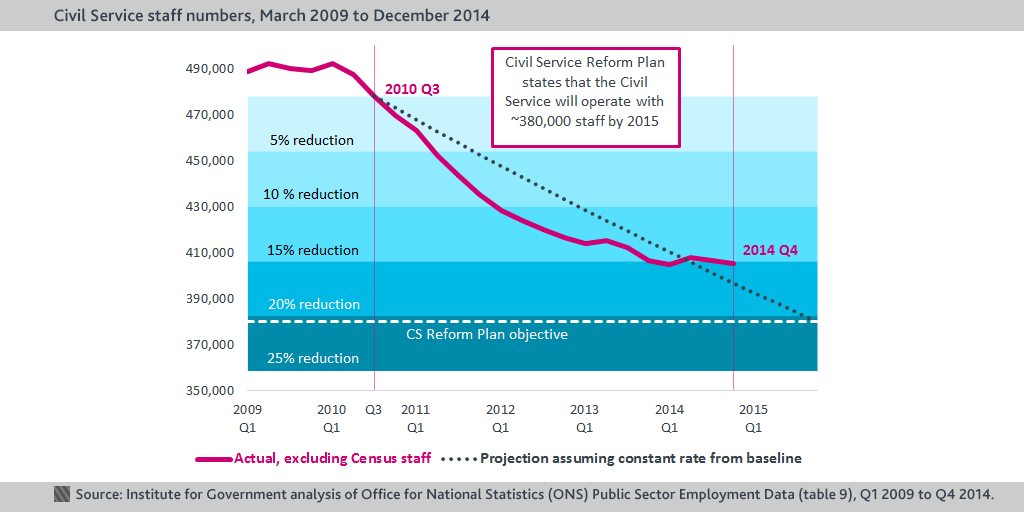
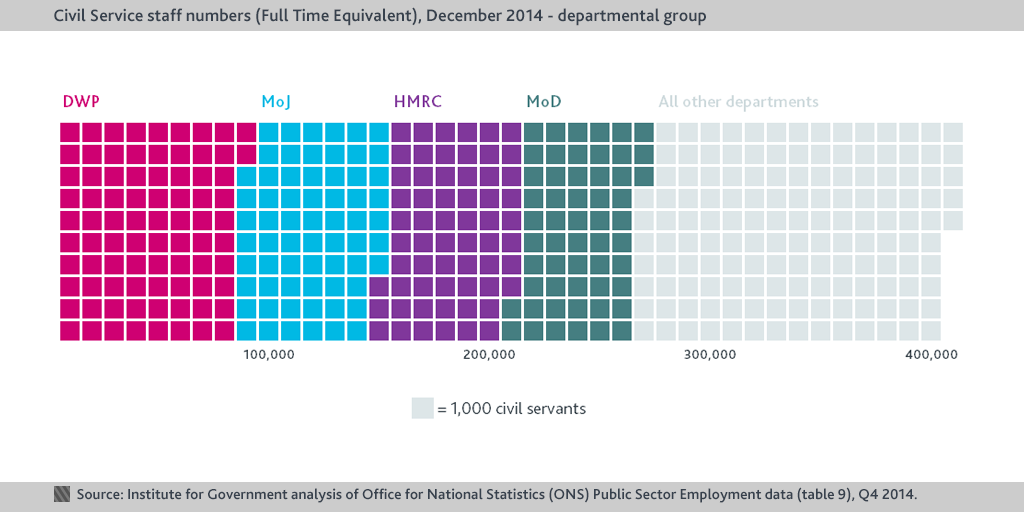
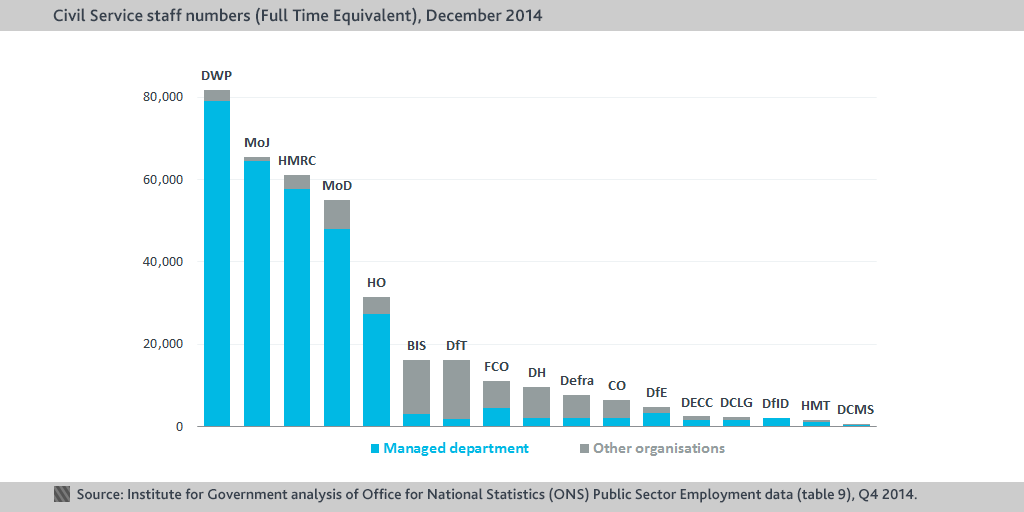
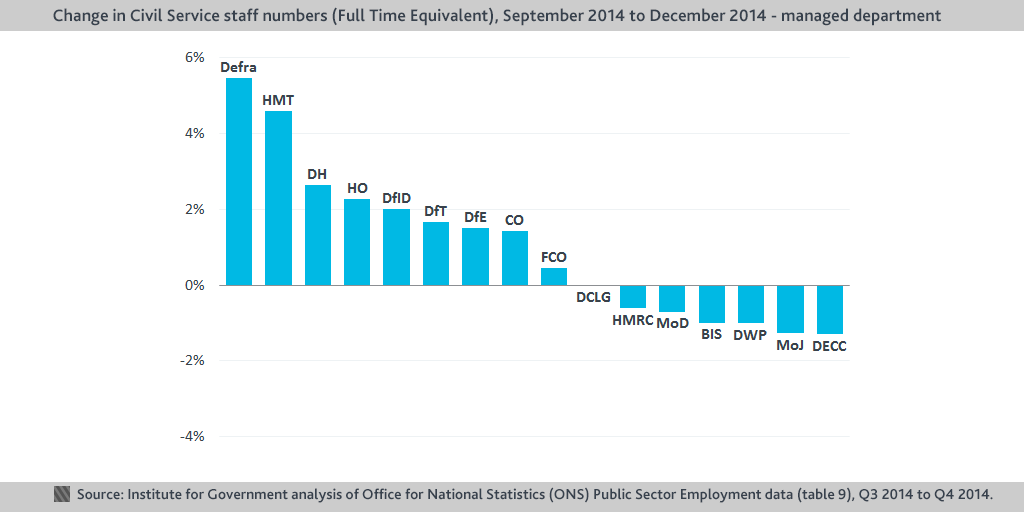
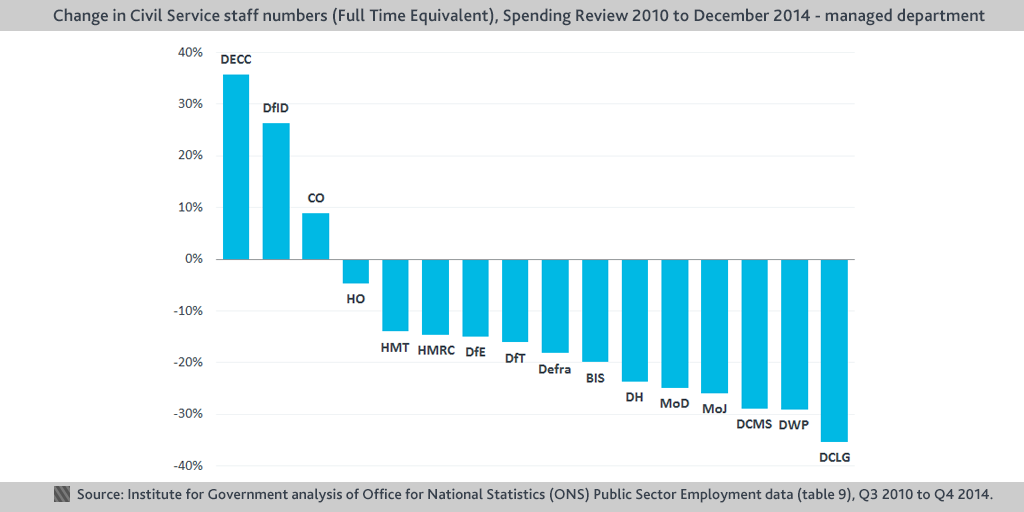
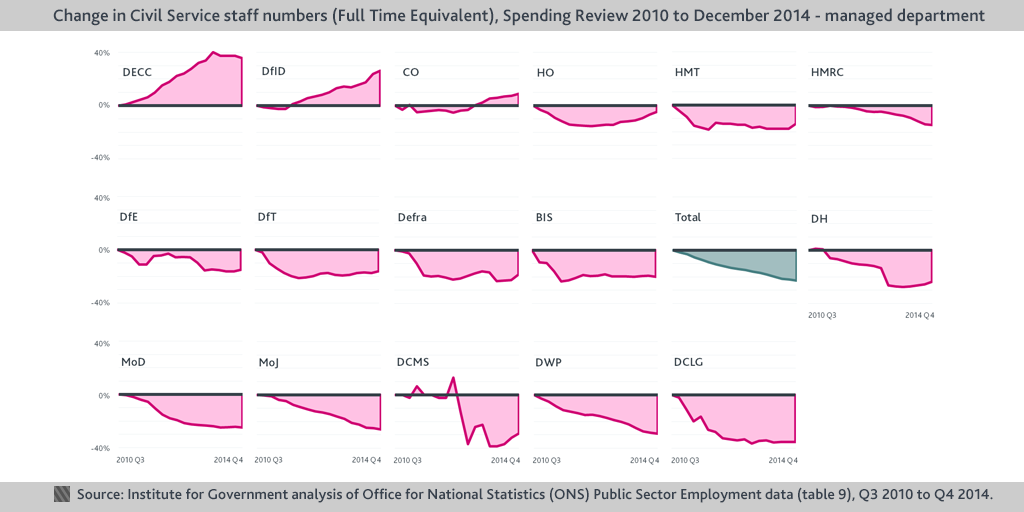
- Topic
- Civil service
- Keywords
- Civil servants
- Administration
- Cameron-Clegg coalition government
- Publisher
- Institute for Government